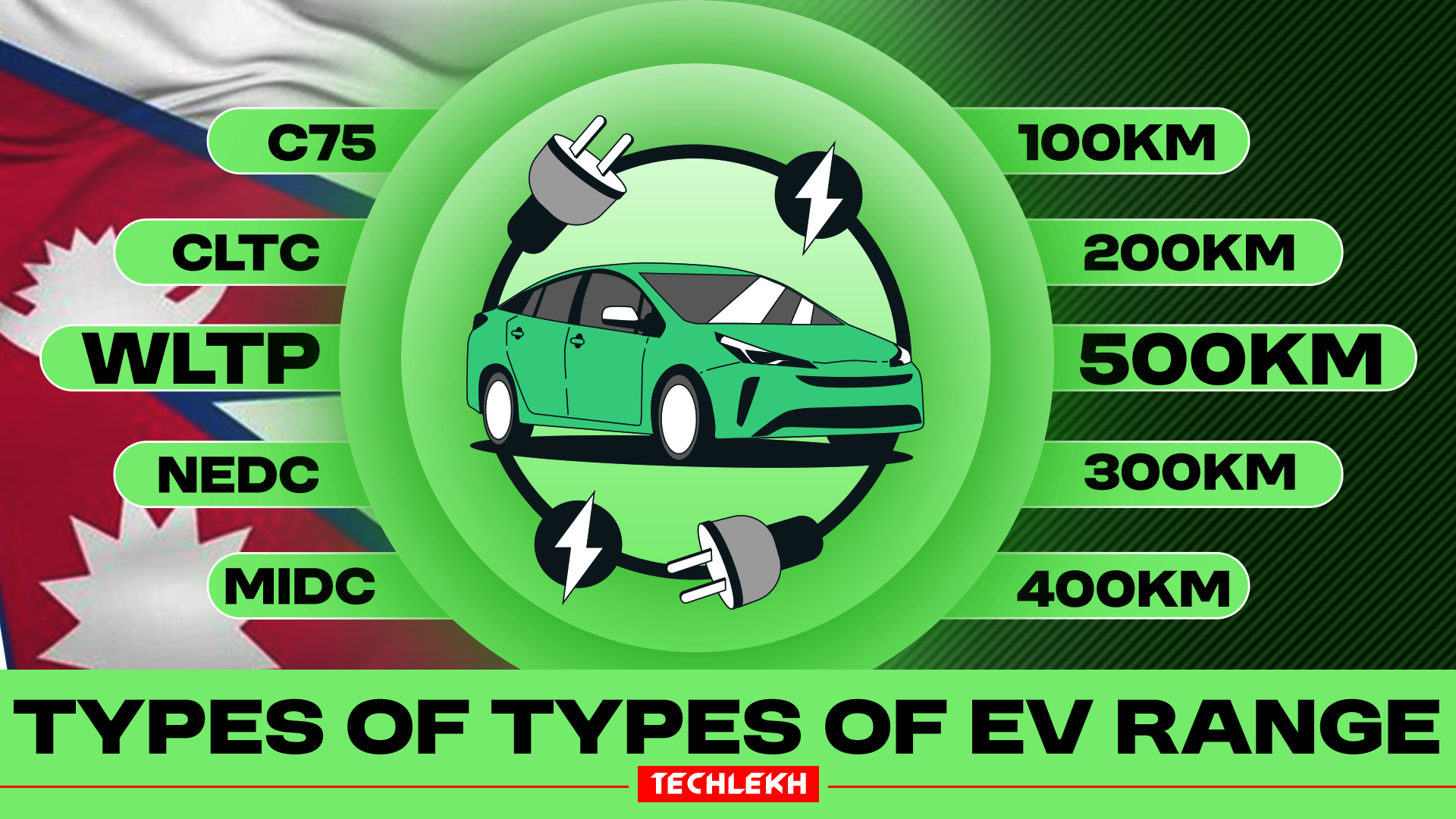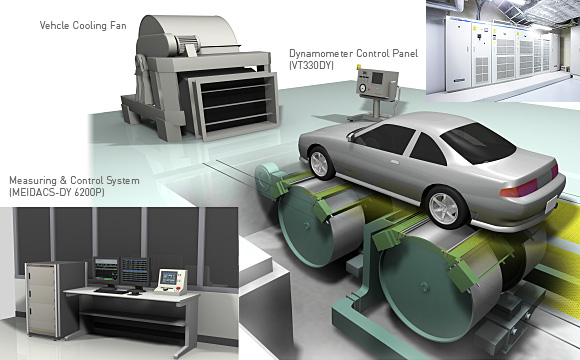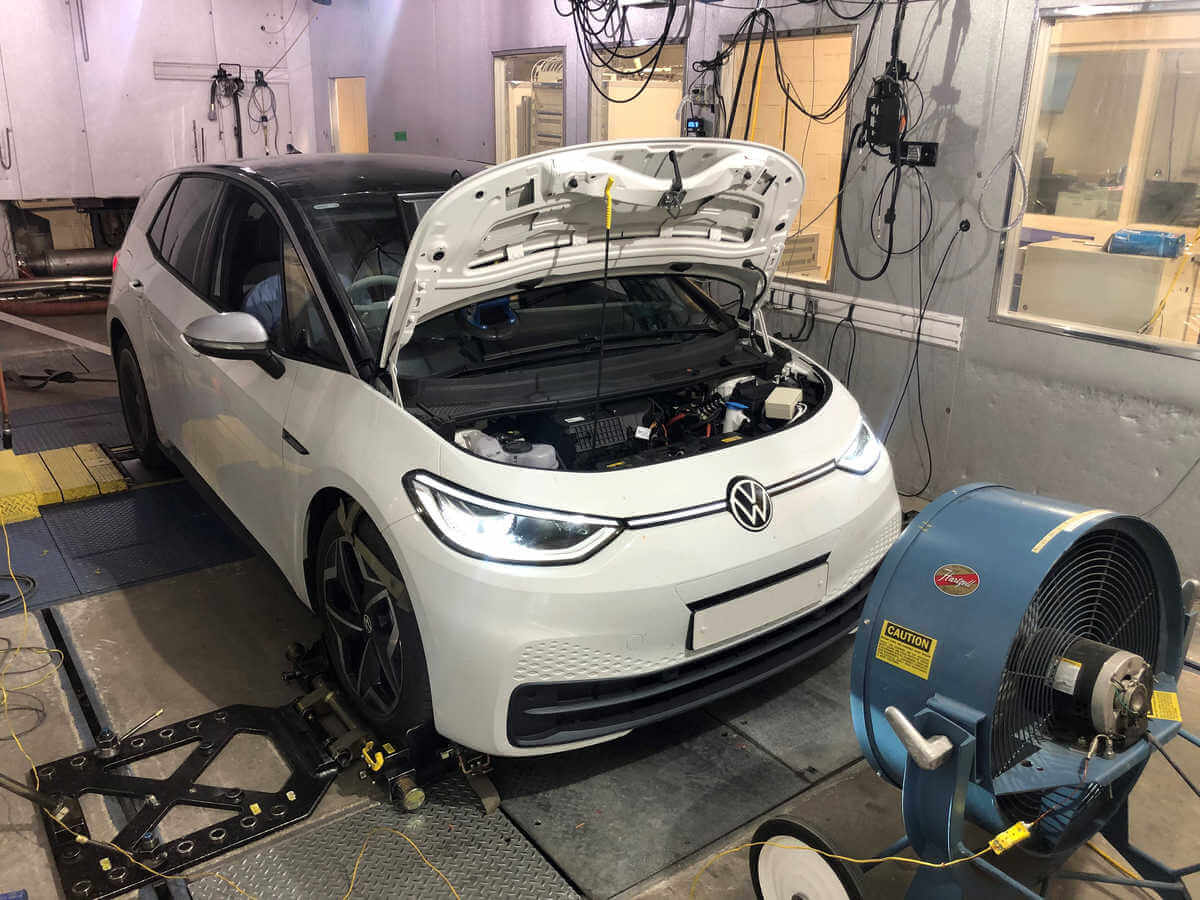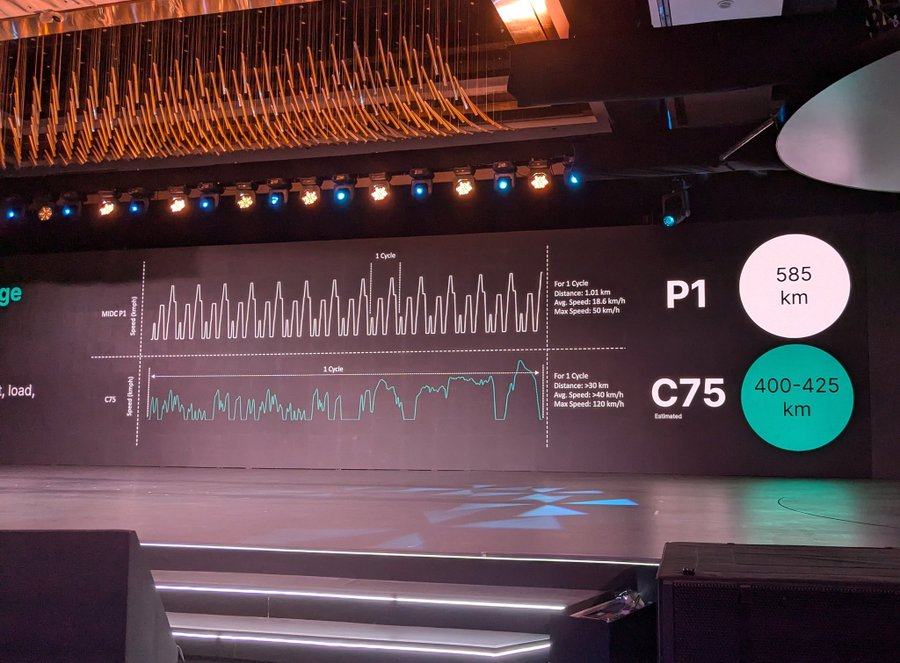When shopping for an electric vehicle (EV), one crucial factor to consider is its range—the distance it can travel on a single charge. However, the range figures provided by manufacturers can vary significantly due to different testing protocols.
The most commonly known electric vehicle range tests include the EPA (Environmental Protection Agency) Test, WLTP (Worldwide Harmonized Light Vehicle Test Procedure), and CLTC (China Light-Duty Vehicle Test Cycle).

In this article, we simplify the various range testing protocols for Electric Vehicles (EVs) to help you better understand the concept and make informed decisions when choosing an EV based on its range.
The Evolution of Electric Vehicle Range Testing
Testing protocols for vehicles have evolved significantly with the rise of Electric Vehicles (EVs). Traditionally, testing focused on Internal Combustion Engine (ICE) vehicles, primarily to assess fuel consumption and mileage. However, as EVs have become mainstream, testing protocols have adapted to address their unique characteristics.
For Battery Electric Vehicles (BEVs), range testing primarily revolves around battery performance. The driving range of a Electric Vehicle largely depends on its battery’s capacity, composition, and size.
While battery performance can be quantified through technical specifications, factors such as environmental conditions, driving patterns, and road conditions significantly influence real-world performance. This makes it challenging to provide a single, universally accurate range estimate.
Driving conditions vary greatly between regions. For instance, the driving environment in the US differs from that in India and Nepal. Consequently, a single test protocol may not offer accurate range estimations across all regions.
To address these variations, different regions have developed specific testing protocols. In the US, the Environmental Protection Agency (EPA) conducts range tests. The European Union uses the Worldwide Harmonized Light Vehicles Test Procedure (WLTP), which replaced the New European Driving Cycle (NEDC) test.
China employs the China Light-Duty Vehicle Test Cycle (CLTC) for range estimation. Furthermore, India has also developed its own testing protocol, the Modified Indian Driving Cycle (MIDC), which is working towards gaining international recognition.
How are the EV Range Tests Carried Out?
EV range tests are conducted to determine how far an electric vehicle (EV) can travel on a single charge. The process typically involves using specialized devices and following rigorous testing methods to ensure accuracy and consistency.
To measure an EV’s range, testers employ sophisticated equipment such as Dynamometers and Data logging systems.
Dynamometers simulate real-world driving conditions by rolling the vehicle on rollers while measuring its power output and energy consumption.
Data logging systems record various parameters, including battery voltage, current, and speed, providing detailed insights into the vehicle’s performance during the test.

The testing method involves running the EV through a set driving cycle that replicates a range of conditions. Common cycles include urban driving, highway cruising, and mixed conditions. Each cycle is designed to mimic everyday driving scenarios, helping to gauge how the vehicle performs in different environments.
Additionally, some tests are conducted using a constant speed on a closed track to measure the maximum possible range under ideal conditions.
External factors play a crucial role in range testing. Temperature, humidity, and terrain can significantly impact the results.
For instance, cold weather can reduce battery efficiency, while hilly terrain can increase energy consumption. To account for these variables, tests are often conducted under controlled conditions, and multiple runs are performed to ensure that the results are representative and reliable.
The Importance of Consistent Range Estimates
The range of an EV can significantly influence consumer perceptions and purchasing decisions.
As a result, manufacturers might be tempted to manipulate range figures to present a more favorable estimate of their vehicles’ performance.
Therefore, having standardized testing protocols is crucial for providing consumers with reliable and comparable information.
These various EV range standards are essential for ensuring consistent range estimates across different conditions and regions.
They help consumers make informed decisions by offering transparent and comparable data, which promotes trust in the automotive market.
Additionally, these standards support regulatory compliance, ensuring that manufacturers meet performance benchmarks and adhere to environmental regulations.
In this article we will break down the most common EV range tests: EPA, WLTP, CLTC, NEDC, and MIDC.
Most Common EV Range Tests
EPA (Environmental Protection Agency) Test
Summary
- The EPA test originated in US and is backed by the Environmental Protection Agency (EPA).
- It includes a range of driving speeds and conditions, reflecting actual vehicle usage more accurately.
- This test is done for 1.5 hours to 2 hours.
- Generally, it is considered one of the most reliable measures for estimating EV range in real-world scenarios.
The EPA range test is renowned for its rigorous evaluation of an EV’s range which is done by the Environmental Protection Agency of the US. During the test, vehicles run on a dynamometer that simulates real-world driving conditions, combining both city and highway driving. This approach reflects a typical mix of urban and long-distance travel. The test can last up to two hours, making it one of the toughest range tests for electric vehicles.
Moreover, EPA uses a correction factor of 0.7 which is multiplied to the final results obtained from the test. This is done to account for potential aggressive driving and HVAC usage.
In addition to standard testing, the EPA also evaluates vehicles under various temperature ranges to understand how extreme weather conditions impact battery performance. This thorough method ensures that the range estimate provided closely matches what drivers will experience in everyday use.
For example, the Tesla Model 3 Long Range has an EPA-estimated range of approximately 550 kilometers. In real-world conditions, drivers can generally expect a range of about 500 kilometers.
WLTP (Worldwide Harmonized Light Vehicles Test Procedure)
Summary
- It originated in Europe and is approved by the European Union.
- Vehicle is simulated over a variation of traffic density, urban roads and highway roads across the four speed phases.
- WLTP replaces the older NEDC test, addressing its shortcomings.
- This tests is conducted across four phases and lasts for approximately 30 minutes.
The WLTP test aims to provide a more realistic assessment of an EV’s range by incorporating a range of driving conditions. The procedure involves several phases: low, medium, high, and extra-high speeds.
Each phase reflects different traffic densities and road types, with urban roads accounting for 52% and highway roads 48% of the test.
Vehicles undergo testing on a dynamometer in these varying conditions for about 30 minutes, simulating diverse driving environments.
The WLTP test is also conducted at different temperatures to assess performance across a range of environmental factors. This comprehensive approach offers a range estimate that more closely aligns with real-world driving.

However, WLTP is not as rigorous as the EPA test. As a result, WLTP estimates can be 10-20% higher than EPA results for some vehicles.
Despite this, the WLTP test is considered the most balanced among range tests and provides a decent estimate of a vehicle’s range.
Furthermore, WLTP is relevant to Nepal because many EVs imported into the country are WLTP-tested.
For example, one of the most popular EVs in Nepal, the BYD Atto 3 (Superior Variant), has a WLTP-claimed range of 420 kilometers. In real-world conditions, the Atto 3 offers a practical range of around 330-340 kilometers.
While some deviation between claimed and actual range is inherent, the discrepancies can be attributed to Nepal’s demanding driving patterns and poor road conditions.
Nonetheless, WLTP provides a valuable benchmark for understanding an EV’s performance under more standardized conditions.
CLTC (China Light-Duty Vehicle Test Cycle)
Summary
- It originated in China and was developed by the China Automotive Technology and Research Center (CATARC).
- CLTC reflects typical driving conditions in China.
- The range tests is done for for 30 minutes.
- It often gives 15% to 25% higher results than the real-world range.
It involves a combination of urban and highway driving, but the test conditions are generally less stringent than those used in other protocols.
Vehicles are tested on a dynamometer, focusing on typical Chinese driving patterns, which often include lower speeds and less aggressive driving.
The CLTC test also accounts for regional factors such as higher temperatures and varied road conditions, aiming to provide a range estimate relevant for Chinese drivers. This localized approach offers a practical reflection of EV performance in China.
While CLTC range figures might not be as pertinent for regions outside China, they hold particular significance for Nepali consumers.
This is especially true given the current influx of Chinese EVs in the Nepali market, many of which are CLTC-tested.
For instance, consider the BYD Atto 3 Superior variant. The CLTC range for this model is claimed to be around 500 kilometers.
However, in practical terms, the actual range in real-world conditions typically falls between 330 and 340 kilometers.
The discrepancy between the CLTC range and actual performance can be attributed to differences in road infrastructure and driving conditions between China and Nepal. CLTC tests are designed to reflect Chinese driving patterns and road conditions, which may not align with those in Nepal.
Therefore, while CLTC range figures provide a baseline, it is beneficial for Nepali consumers to seek out WLTP references when evaluating the range of Chinese EVs.
NEDC (New European Driving Cycle)
Summary
- It was the primary range test in Europe before being replaced by the WLTP.
- NEDC is considered the least reliable test among the international standards.
- This tests is also conducted for only 20 minutes.
- The testing conditions are less stringent and less comprehensive.
The NEDC was the standard test procedure in Europe before WLTP was introduced. It involves a fixed driving cycle that combines urban and highway driving. Vehicles are tested on a dynamometer under controlled conditions, following a predefined set of driving patterns.
This cycle aims to simulate typical driving scenarios but is known for its less demanding conditions, including lower average speeds and less aggressive acceleration.
As a result, the NEDC often produced higher range estimates that did not always match real-world driving conditions. Due to its limitations in accurately reflecting actual vehicle performance, the NEDC has been replaced by the WLTP.
MIDC (Modified Indian Driving Cycle)
HIGHLIGHTS:
- MIDC was designed to reflect driving conditions typical in India.
- It is yet to receive international recognition.
- The test duration is 20 to 30 minutes.
- MIDC tested ranges are often 30-35% higher than the actual range.
The MIDC is tailored to reflect driving conditions typical in India. It involves a combination of urban and highway driving, emphasizing factors common in Indian driving environments. Vehicles are tested on a dynamometer, accounting for high temperatures and stop-and-go traffic. The MIDC cycle features lower speeds and variable road conditions to simulate the challenges faced by Indian drivers.
This localized approach offers a range estimate more relevant to Indian drivers, though it may result in lower range figures compared to tests with less demanding conditions.
Although MIDC is not internationally recognized, it holds relevance for Nepali consumers as popular Indian EVs such as the newly launched Mahindra XUV400 boast MIDC claimed range.
To establish a reference, the XUV400 MIDC claimed range is 456 Km for the EL Pro variant which was launched in Nepal. However, the actual range for the XUV400 is only around 290-300 Kms.
ALSO READ: New Tax Policy for Electric Vehicles for 2080/81! in Nepal
C75
HIGHLIGHTS:
- C75 is an updated testing model of the MIDC.
- It produces an average of 23% lower estimates than the MIDC.
- 75% of the C75 claimed range can be expected in real-world scenario.
- C75 cycle test has become mandatory for EV automakers in India.
The increasing adoption of EVs in India led to the introduction of the C75 test cycle.
Previously, most Indian-made EVs were tested using the MIDC, which provided overly optimistic results that were difficult to achieve in real-world conditions.
To address this, the C75 test cycle was developed, offering more rigorous and variable testing to produce estimates that closely align with real-life performance. The C75 cycle has proven successful in delivering accurate estimates.
For example, the C75 test range for the Tata Punch EV is between 270-290 km, a close reflection of what drivers can expect in actual driving conditions.

However, currently only Tata has adopted the tests for evaluating its EVs. But in the future, C75 will most definitely be implemented on all Indian-made EVs.
Summary of Type of Electric Vehicle Range Tests
The following table summarizes the Range test along with their attributes.
| Test | Test Origin | Approved By | Simulated Drive Cycles/Phases | Method | Duration | Interesting Facts | Reliability |
|---|---|---|---|---|---|---|---|
| EPA Rating | US | Environment Protection Agency | City and Highway Cycles | Chassis dynamometer; real-world simulation | ~ 1.5 – 2 hours | Conservative estimates; reflects real-world conditions | Considered most reliable |
| WLTP | Europe | European Commission | Low/Medium/High/Extra-High Speed Phases | Chassis dynamometer; broad speed range | ~ 30 minutes | Includes real-world factors; broader speed range | 10-20% higher estimates than actual range |
| NEDC | Europe | European Commission | Urban and Extra-Urban Cycles | Chassis dynamometer; less realistic | ~20 minutes | Older test; tends to overestimate range | 20-30% higher estimates than actual range |
| CLTC | China | CATARC | Urban/Suburban/Highway Cycles | Chassis dynamometer; local conditions | ~30 minutes | Reflects Chinese driving habits; newer than NEDC | 15-25% higher estimates than actual range |
| MIDC | India | ARAI and CIRT | Urban Cycles | Chassis dynamometer; local conditions | ~20-30 minutes | Reflects Indian driving patterns | 30-35% higher estimates than actual range |
| C75 | India | – | Urban/Extra Urban Cycles | Chassis dynamometer; local conditions | ~20-30 minutes | Reflects Indian driving patterns | 20-25% higher estimates than actual range |
To summarize, EPA standards are often considered the gold standard for range testing due to their rigorous and comprehensive evaluation.
But most of the vehicles that come to Nepal are not EPA tested rather claim a WLTP, CLTC, or NEDC range.
However, in the context of Nepal, WLTP-based claims are generally more relevant and practical. This is because EPA-tested vehicles are rarely, if ever, found in Nepal.
The WLTP test offers a more accessible benchmark for consumers in Nepal, as most brands are leaning toward this protocol.
A thing to consider is to account for a 10% to 20% error in WLTP claims, as the real-world range often falls short of these figures.
Thus, WLTP serves as a more applicable standard for understanding EV performance in Nepal’s unique driving environment.
-
TechLekh Awards: Best Bikes of 2025 in Nepal Winners!Motorcycling in Nepal has always meant more than just getting from one place to another.…
-
TechLekh Awards: Best Cars of 2025 in Nepal Winners!Electric vehicles continue to dominate Nepal’s market in 2025, and Chinese manufacturers still lead the…
-
New Price Alert: iPhone 15 Sees a Rs. 5,000 Cut in NepalHIGHLIGHTS Apple iPhone 15 price in Nepal starts from Rs. 1,09,899 (128GB). It is powered…
-
Price Hike Alert: iPhone 14 Just Became More Expensive in NepalHIGHLIGHTS Apple iPhone 14 price in Nepal is Rs. 90,799 (128GB). The 14 is the…
-
iPhone 13: The Cheapest iPhone in Nepal Just Got Expensive!HIGHLIGHTS The Apple iPhone 13 price in Nepal is Rs. 80,399 (128GB). Apple iPhone 13…
















